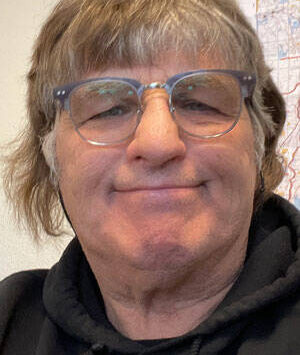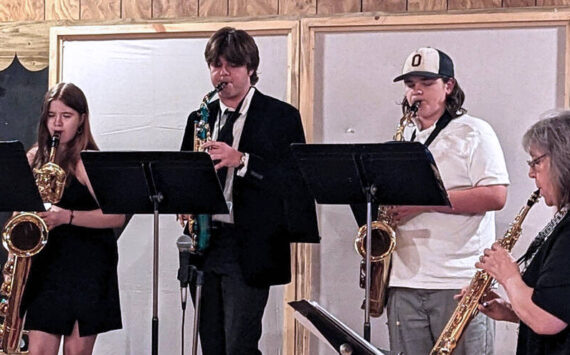Evaluation system takes hold this year
TONASKET – The Tonasket School Board approved a Memorandum of Understanding (MOU) on Monday, Aug. 26, that was drafted by a committee of administrators and teachers that charts the district’s course through the state-mandated Teacher/Principal Evaluation Project requirements.
Teachers will be evaluated on a yearly basis using the system, although the depth of evaluation differs from year to year based upon a number of factors.
Teachers will be evaluated both upon a standard set of eight criteria (based upon what is known as the Marzano Evaluation Model) and student achievement. The achievement portion is based upon student growth, not simply raw test scores.
“Our teachers are becoming confident about this process being about growth and improvement,” said middle school principal Jay Tyus, who coordinated the TPEP committee. “It’s not about some kind of mongering evil.”
The four-tiered system places teachers into four categories, both in each of the eight standard criteria and as an overall evaluation: Distinguished (exceeds standards), Proficient (consistently meets standards), Basic (occasionally meets standards) and Unsatisfactory (does not meet standards). Student growth is measured on three tiers.
“You cannot be ‘Distinguished’ without at least average student growth,” Tyus said.
He also stressed that great lengths were taken to be certain that student growth will be evaluated for what is pertinent to what is being taught.
For example, he said, in a shop class, students’ language arts proficiency won’t be what a teacher is accountable for.
“In shop class, I want to see from start to finish how many kids can do vertical welds,” Tyus said. “How many kids can weld around a pipe, if that’s something that’s a standard you need to pass on the industry tests.
“This whole thing is where the rubber meets the road. I know where kids were, I know where they are (now), I did something about it.”
Teachers that show two months of below-average student growth, or who fall into the Basic category, will be placed on action plans to remedy whatever issues have arisen.
“This is regardless of whether a teacher is Distinguished or not,” Tyus said. “The following school year: we have to examine student growth along with other evidence. We have to examine extenuating circumstances; we have to schedule monthly conferences focused on improving student growth.
“So this could be the greatest teacher you ever had in your life in your whole building, and you’re going to end up having monthly accountability meetings around student growth. Also if you have a teacher struggling around the rubric (the Marzano standard), (administrators) will be accountable to them to have these conversations. It’s about improvement, not replacement.”
Despite measured optimism about the system itself, there was concern about the effects of what amounts to a massive unfunded state mandate to get the job done.
“Is the state going to help us pay for this?” asked board member Lloyd Caton of the administrators. “Are you still going to be able to the rest of your job? Your sole job isn’t to evaluate teachers. That’s going to eat up a lot of your time.”
“If we do it right, it will change the face of work as we know it,” said high school principal Jeff Hardesty. “We’ve had lengthy conversations where we’ll come the full circle. First we’ll freak out – at least I will – then eventually we’ll say wait, it’s manageable. We’re all a little apprehensive about it.
“I just ask that you ask that question in a year. The reality is that we’ll probably have to have a conversation about restructuring our resources to do it right.”
“If there’s a way, track the cost of this,” Caton said. “Because when I go to legislative meetings and we’re looking for more funding, I want to be able to tell them TPEP is costing us this much money … Their hours are worth dollars. If they are putting dollars into (TPEP), and over here (something else) doesn’t happen…
” Maybe the relief we get is more money and more assistant principals or something to help get this work done. We’ll have to have our ducks in a row, and a sheet of numbers that says, you did this to us and it cost us $1.5 million or whatever it is.”
“That’s a lot of work,” said board member Ty Olson. “”I can’t even imagine it. I appreciate your attitudes toward it.”
“Be sure to express that to every teacher you see,” Tyus said. “We (administrators) have a lot of work we have to do in terms of documentation. But the teachers have to actually change their practice. And for some that means changing who they are as a person.”
Turner and Tyus both expressed the significance of the collaborative nature of formulating the MOU.
“That’s how we’ve been trying to move this evaluation project forward …,” Turner said. “It’s not going to behoove us to be one-sided on this.”
“I think we were able to come to the conclusion that we were all in it together,” Tyus said. “We needed to solve the problem. It’s all about student success. That’s all it’s about. Student success is tied to teachers’ success, which is tied to Paul’s success. There’s not any one group that wins more than any other, except maybe the kids.”



